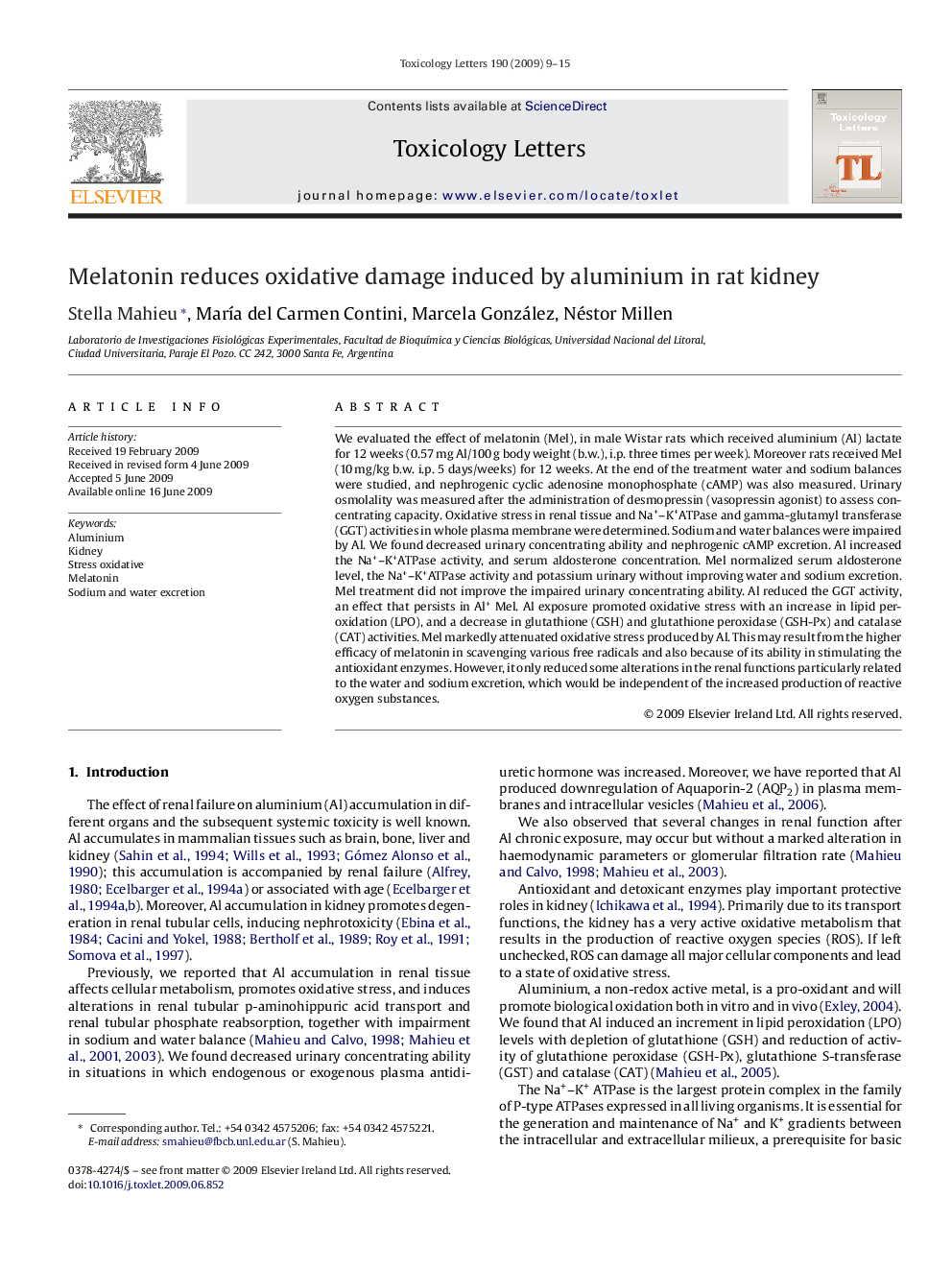| Article ID | Journal | Published Year | Pages | File Type |
|---|---|---|---|---|
| 2601033 | Toxicology Letters | 2009 | 7 Pages |
We evaluated the effect of melatonin (Mel), in male Wistar rats which received aluminium (Al) lactate for 12 weeks (0.57 mg Al/100 g body weight (b.w.), i.p. three times per week). Moreover rats received Mel (10 mg/kg b.w. i.p. 5 days/weeks) for 12 weeks. At the end of the treatment water and sodium balances were studied, and nephrogenic cyclic adenosine monophosphate (cAMP) was also measured. Urinary osmolality was measured after the administration of desmopressin (vasopressin agonist) to assess concentrating capacity. Oxidative stress in renal tissue and Na+–K+ATPase and gamma-glutamyl transferase (GGT) activities in whole plasma membrane were determined. Sodium and water balances were impaired by Al. We found decreased urinary concentrating ability and nephrogenic cAMP excretion. Al increased the Na+–K+ATPase activity, and serum aldosterone concentration. Mel normalized serum aldosterone level, the Na+–K+ATPase activity and potassium urinary without improving water and sodium excretion. Mel treatment did not improve the impaired urinary concentrating ability. Al reduced the GGT activity, an effect that persists in Al+ Mel. Al exposure promoted oxidative stress with an increase in lipid peroxidation (LPO), and a decrease in glutathione (GSH) and glutathione peroxidase (GSH-Px) and catalase (CAT) activities. Mel markedly attenuated oxidative stress produced by Al. This may result from the higher efficacy of melatonin in scavenging various free radicals and also because of its ability in stimulating the antioxidant enzymes. However, it only reduced some alterations in the renal functions particularly related to the water and sodium excretion, which would be independent of the increased production of reactive oxygen substances.
